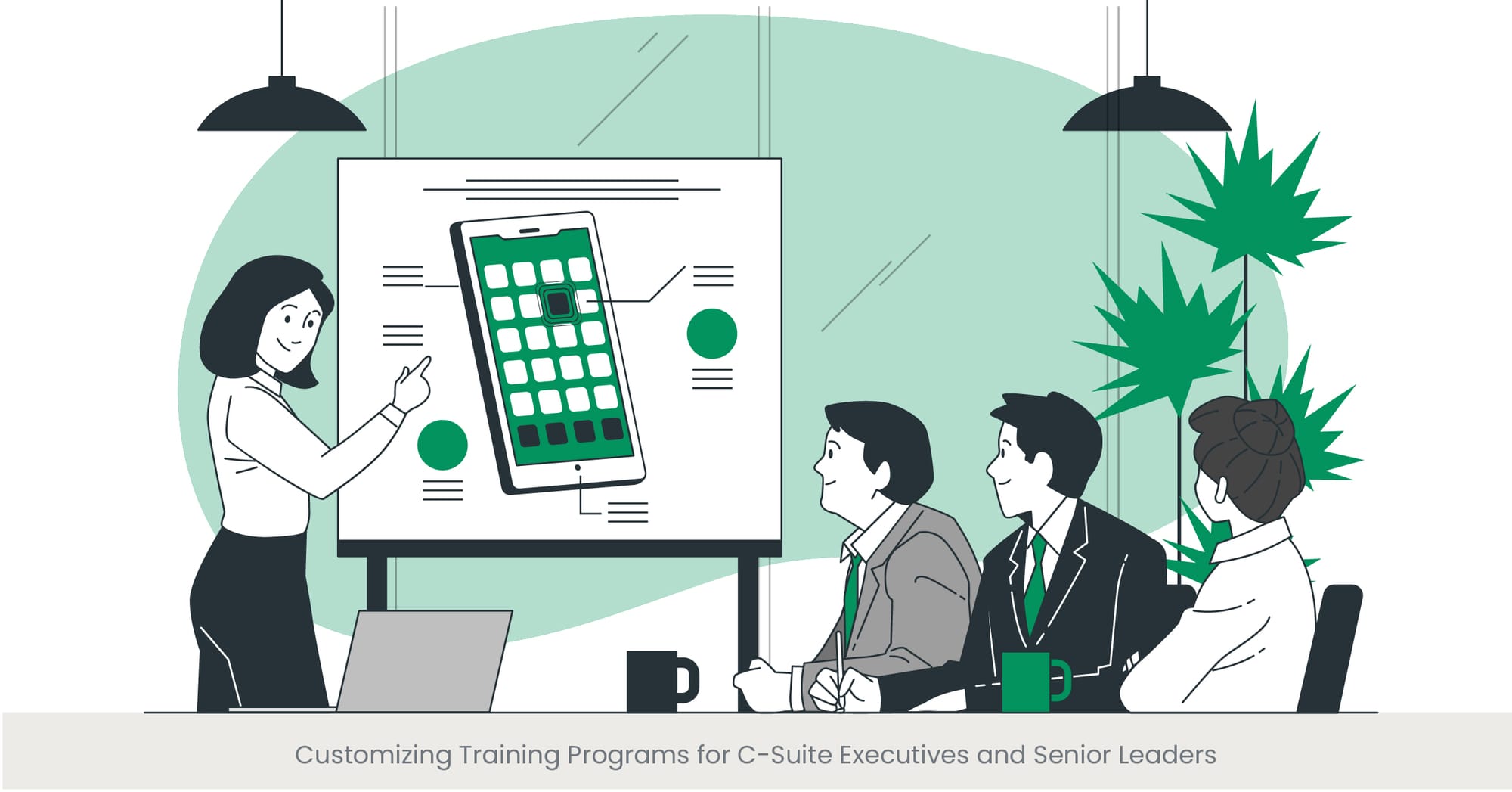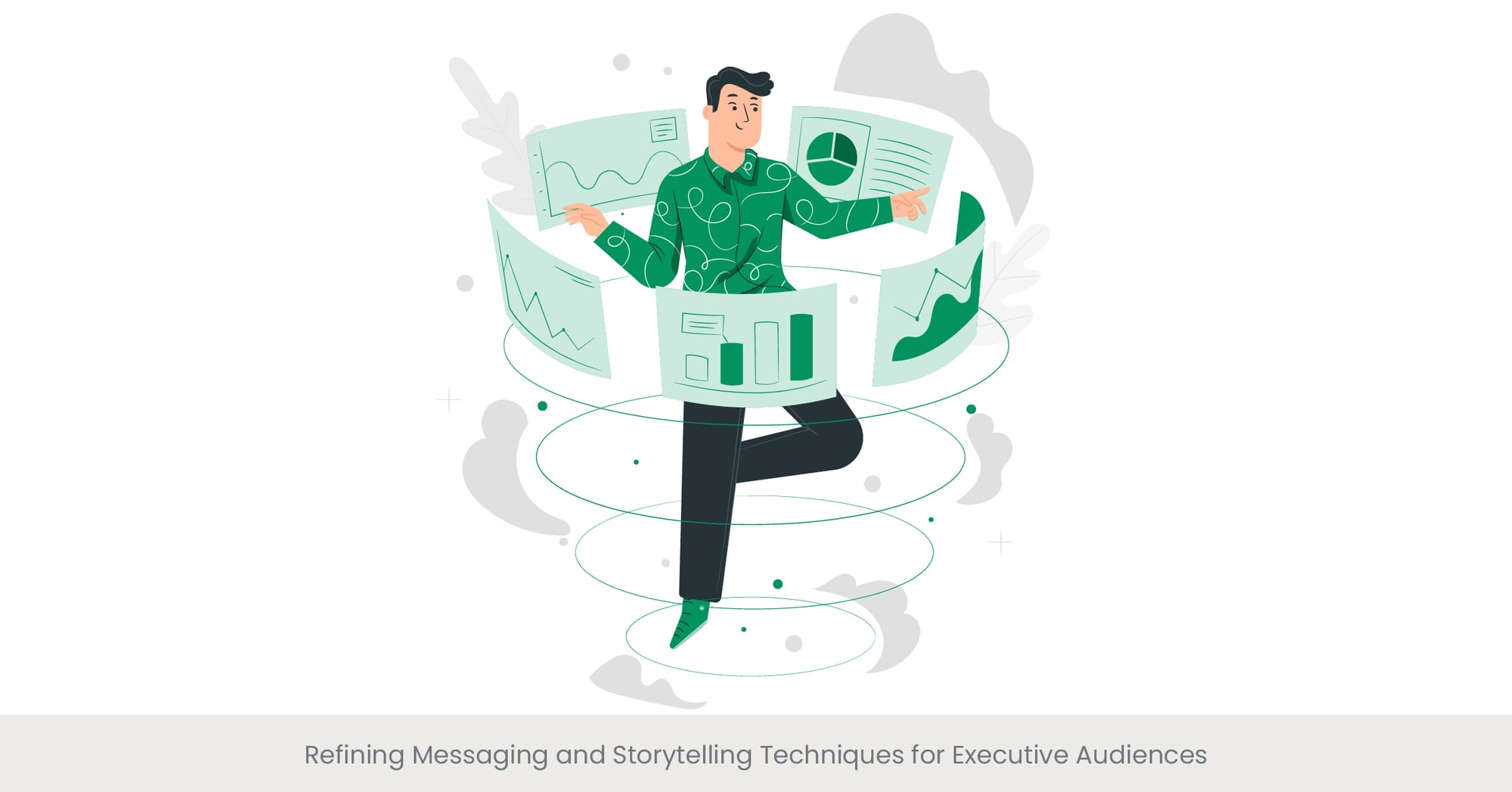
Identifying Executive-Level Presentation Challenges and Needs

Introduction: Understanding the Unique Presentation Demands of Executives
Executives face distinct challenges when delivering presentations due to their high-stakes nature and the critical audiences involved. Identifying these challenges is the first step towards empowering leaders with the skills and expertise necessary to communicate effectively. This process involves recognizing the specific needs of C-suite professionals, who must often convey complex information succinctly and persuasively to influence decision-making and inspire teams.
Background: The Evolution of Executive Presentation Challenges
Historically, executive presentations were primarily focused on delivering financial results and strategic plans to board members or investors. However, the digital age has expanded the scope of executive communication. Today, leaders are expected to master not only the content but also the delivery methods, including the use of advanced presentation software and multimedia marketing tools. This evolution underscores the importance of tailored training programs that address the unique environment in which senior leaders operate.
Real-World Applications: Addressing Modern Executive Presentation Needs
In practice, the challenges faced by executives vary widely. For instance, a CEO might struggle with maintaining audience engagement during virtual conferences, a scenario that has become increasingly common. Training sessions that include mock presentations and real-time feedback can be invaluable. Companies like Ink PPT have developed executive training workshops that focus specifically on high-stakes scenarios, helping leaders to hone their skills in delivering powerful presentations and managing audience interaction effectively.
References and Validation
Studies from sources like Harvard Business Review highlight that effective executive communication can significantly impact company performance. For instance, a survey by Forbes indicated that executives who excel in executive presentation training and skills are 45% more likely to receive higher leadership ratings from their peers. Additionally, programs like "Executive Presentation Skills Workshops" have shown a marked improvement in participants' ability to communicate key messages with clarity and confidence.
Customizing Training Programs for C-Suite Executives and Senior Leaders

Introduction: Tailoring Training to Meet Executive Needs
Effective training for executives must be highly customized to reflect the unique pressures and responsibilities of senior leadership roles. Developing bespoke training programs involves a deep understanding of the individual and organizational goals, ensuring that each session directly contributes to enhancing decision-making, leadership presence, and strategic communication skills among top executives.
Background: The Importance of Personalized Executive Training
Traditional one-size-fits-all training programs often fall short when applied to senior executives, who require more specialized and focused content to address their specific challenges and environments. The shift towards personalized training programs has been driven by the need for more practical and impactful learning experiences that executives can directly correlate with their day-to-day activities. This involves integrating real business cases, industry-specific scenarios, and personalized feedback mechanisms.
Real-World Applications: Successful Customization Strategies
One effective approach is the use of intensive courses and executive presentation skills bootcamps designed specifically for C-suite members. For example, companies like Ink PPT have pioneered "INK PPT Executive Training," which involves detailed assessments of individual executive's strengths and weaknesses to tailor the program and content. These programs often employ techniques such as role-playing, scenario-based learning, and peer reviews to create a dynamic learning environment that challenges and refines the executive's ability to communicate under various pressures.
References and Validation
According to a study published in the Journal of Business Communication, customized training programs for executives have led to a significant improvement in their presentation skills, with an average increase in effectiveness rated at 40% post-training. Furthermore, case studies from executive training programs conducted by leading corporate training providers report that tailored programs have markedly increased participant engagement and satisfaction, leading to better retention of presentation techniques and concepts.
Coaching Executives on High-Stakes Presentation Scenarios
Introduction: The Crucial Role of High-Stakes Presentation Coaching
In the world of executive leadership, the ability to deliver presentations effectively in high-stakes situations can define a career. Such scenarios often include board meetings, investor pitches, or public announcements, where the stakes are high and the pressure is intense. Coaching executives on how to handle these moments is crucial for their success and, by extension, the success of their organizations.
Background: Developing Confidence and Competence in High-Pressure Situations
The intensity and complexity of high-stakes presentations require more than just basic presentation skills. They demand a comprehensive understanding of both the content and the dynamics of influence and persuasion under pressure. This form of coaching focuses on developing an executive's presence, storytelling techniques, and the strategic use of presentation tools to convey authority and inspire confidence among critical audiences.
Real-World Applications: Techniques and Strategies for Executive Coaching
Effective coaching strategies often involve simulated high-pressure environments where executives can practice and receive feedback. This might include detailed video reviews of practice sessions with clients, the use of virtual reality environments to mimic large audiences, or stress management exercises. For instance, "Presentation Skills Bootcamps" often incorporate these elements, providing executives with real-life scenarios that improve their ability to think on their feet and adapt their message on the fly.
References and Validation
Research from the Center for Leadership Development highlights that executives who underwent targeted coaching for high-stakes presentations reported a 50% improvement in their communication effectiveness. Furthermore, a case study by the American Management Association showcases how a series of intensive training sessions led to a notable increase in positive outcomes during critical business negotiations and presentations.
Developing Strategies for Executive Presence and Charisma

Introduction: Cultivating Charisma and Presence in Leadership
Executive presence and charisma are not merely innate traits but skills that can be developed and refined. These qualities are essential for leaders who need to inspire confidence, articulate visions clearly, and influence stakeholders effectively. Developing these skills involves a combination of training, practice, and feedback aimed at enhancing an executive or team's natural leadership qualities.
Background: Understanding the Components of Executive Presence
The concept of executive presence involves a blend of appearance, communication skills, and gravitas. It includes how executives carry themselves, how they speak, and how they connect with their audience. Charisma, on the other hand, is often seen as a person's ability to attract, charm, and influence the people around them. Training programs focused on these areas teach executives to be more aware of their non-verbal cues, tone of voice, and overall demeanor in various professional settings.
Real-World Applications: Implementing Presence and Charisma Training
Training to enhance executive presence and charisma can include personalized coaching sessions that focus on public speaking, body language, and emotional intelligence. For example, sessions might involve recording speaking engagements and analyzing them to improve posture, eye contact, and gestural communication. Moreover, advanced courses might incorporate acting techniques and storytelling workshops to help leaders create compelling narratives and engage their audiences more effectively.
References and Validation
Studies in the "Journal of Leadership & Organizational Studies" have shown that executives who participated in presence and charisma training programs improved their leadership ratings by an average of 30%. Additionally, feedback from senior leaders who have undergone such training often highlights increased confidence and better audience engagement during their presentations and meetings.
Refining Messaging and Storytelling Techniques for Executive Audiences

Introduction: Enhancing Communication with Strategic Messaging and Storytelling
Effective messaging and storytelling are critical components of executive presentations, particularly when addressing seasoned professionals and decision-makers. Refining these techniques enables executives to craft messages that resonate deeply, fostering engagement and facilitating clearer understanding of complex ideas.
Background: The Art of Messaging and Storytelling in Executive Contexts
Messaging in an executive setting must be precise and impactful, designed to cut through the noise and capture the essence of the strategic goals. Storytelling, meanwhile, is not just about relaying information but about weaving facts into a narrative that underscores the speaker's points with emotion and personal connection. These skills are particularly vital in executive communications, where the stakes are often high and the audience's attention and retention are paramount.
Real-World Applications: Practical Approaches to Advanced Storytelling and Messaging
Training programs for executives often incorporate advanced storytelling workshops that teach techniques like the "story arc," character development, and the strategic placement of emotional hooks to enhance persuasion. For example, "Ink PPT Executive Training" might use real-life case studies to show how different storytelling techniques can be used to turn annual reports into compelling growth narratives or to transform market data into stories about opportunity and innovation.
References and Validation
Research from the "Harvard Business Review" indicates that executives who master storytelling techniques are 70% more effective in communicating strategic visions. Moreover, feedback from executive training workshops, like those conducted by "Presentation Skills Bootcamps," often highlights increased audience engagement and more persuasive presentations as key outcomes of storytelling refinement.
Conducting Mock Presentations and Feedback Sessions

Introduction: The Value of Simulation in Executive Training
Mock presentations and feedback sessions are invaluable tools in the arsenal of executive training. They provide a safe, constructive environment where executives can practice their skills, receive targeted feedback, and refine their delivery before facing real-world scenarios. This practice-oriented approach helps ensure that executives are not only prepared in theory but also in practice.
Background: The Role of Mock Sessions in Skill Development
The use of mock presentations in training programs dates back to traditional rehearsal techniques used in various professions where performance under pressure is critical. In the context of executive training, these sessions are designed to simulate high-stakes environments that an executive might face, such as board meetings or public addresses. This method allows for immediate feedback and iterative learning, focusing on both content delivery and audience engagement.
Real-World Applications: Implementing Effective Mock Sessions
Effective mock sessions involve scenarios tailored to present the specific challenges an executive might face, incorporating elements such as time constraints, difficult questions, and diverse audience profiles. Advanced training programs, like those offered in executive presentation skills workshops, often use video recordings and real-time audience analytics to provide comprehensive feedback. Participants can see firsthand how they manage their delivery, handle unexpected interruptions, and use presentation tools under pressure.
References and Validation
Studies from educational institutions like Stanford University have shown that executives who regularly participate in mock presentations improve their public speaking and presentation skills by up to 50%. Furthermore, testimonials from senior leaders who have undergone such training highlight the critical role these sessions play in building their confidence and enhancing their own knowledge and ability to communicate effectively in various high-stakes environments.
Addressing Executive Communication in Crisis Situations

Introduction: Navigating the Challenges of Crisis Communication
Crisis situations test the mettle of any leader, requiring not just quick thinking but also clear, confident and effective communication throughout. For executives, the ability to convey calm, provide direction, and maintain transparency during a crisis is crucial. Effective training in crisis communication can equip leaders with the skills needed to manage these high-pressure scenarios effectively.
Background: The Essentials of Crisis Communication
Effective crisis communication involves more than just the ability to speak clearly; it requires strategic thinking and emotional intelligence to address the concerns and fears of stakeholders. Executives must learn to craft messages that are both reassuring and direct, avoiding ambiguity while providing a clear plan of action. Training in this area focuses on developing these skills, emphasizing the importance of maintaining executive presence even under duress.
Real-World Applications: Real-Life Training for Crisis Scenarios
Training programs designed to enhance crisis communication skills often include simulations that mimic real-life emergencies, from financial downturns to public relations disasters. These sessions help executives practice their response strategies and improve their ability to use communication as a tool to influence public perception and internal morale. For instance, "INK PPT executive training" includes modules that teach leaders how to use storytelling and precise messaging to convey critical information during a crisis.
References and Validation
Research published in the "Journal of Business Ethics" suggests that executives trained in crisis communication are 30% more effective in maintaining stakeholder trust during emergencies. Additionally, companies that have implemented regular crisis communication training for employees and their senior leaders report better outcomes in terms of brand reputation and recovery post-crisis.
Integrating Multimedia and Technology into Executive Presentations
Introduction: Leveraging Technology for Enhanced Presentation Impact
In today’s digital era, the integration of multimedia and technology into presentations is not just an option but a necessity, of course, especially for executives aiming to communicate complex information effectively. This sub-topic explores how technologies can be leveraged to enhance the clarity and impact of executive presentations.
Background: The Evolution of Presentation Technologies
The evolution of presentation technologies has transformed the way information is conveyed in corporate settings. From basic slide shows to dynamic multimedia experiences, technology has enabled presenters to engage their audiences in more interactive and memorable ways. Advanced tools like virtual reality (VR), augmented reality (AR), and interactive data visualizations are now at the forefront of executive presentation techniques.
Real-World Applications: Effective Use of Multimedia in Executive Settings
For executives, the strategic use of these technologies can significantly enhance the delivery of their messages. For example, incorporating video clips can provide real-world context to abstract topics, while interactive polls and real-time data feeds can keep the audience engaged and responsive. Training programs often emphasize the importance of not just using technology, but using it wisely—ensuring that it adds value to the presentation without overwhelming the core message.
References and Validation
Studies have shown that presentations enhanced with relevant multimedia elements can increase retention rates among audiences by up to 50%. For instance, a case study by Cisco Systems demonstrated how their executives used integrated video content to successfully communicate complex infrastructure upgrades during stakeholder meetings, leading to increased understanding and support.
Cultivating Confidence and Authority in Executive Communication

Introduction: Building a Commanding Executive Presence
For executives, projecting confidence and authority is not just about personal charisma; it's a crucial part of effective leadership communication. This sub-topic focuses on how executives can develop these attributes to enhance their influence and effectiveness in various professional interactions and projects.
Background: The Foundations of Authoritative Communication
Confidence and authority in communication stem from a combination of clear messaging, strong vocal presence, and the ability to connect with the audience on a personal level. Training programs for executives often include modules on voice modulation, posture, and the strategic use of pauses to command attention. These elements are crucial for executives to master, as they significantly impact how their messages are received.
Real-World Applications: Techniques for Enhancing Executive Authority
Practical training sessions might involve exercises in public speaking, where executives learn to manage their anxiety and use their body language effectively. Techniques such as storytelling to illustrate key points or the use of rhetorical questions to engage the audience are often taught and practiced. These sessions aim to create a reflexive understanding of how to vary tone and style depending on the audience and context.
References and Validation
According to a study in the "Journal of Leadership Education," executives who participated in targeted training focusing on communication confidence saw an improvement in their leadership effectiveness ratings by over 35%. Feedback from these programs consistently highlights increased self-assurance in delivering presentations, leading meetings, and engaging in critical negotiations.
Tracking Progress and Measuring Impact on Executive Presentation Skills

Introduction: Ensuring Continuous Improvement in Presentation Skills
For executives, continuous improvement in presentation skills is vital for sustained career growth and leadership effectiveness. Implementing robust methods for tracking progress and measuring the impact of these skills is essential to ensure that training interventions are successful and that executives are developing in alignment with their personal and organizational goals.
Background: The Importance of Metrics in Executive Training
In the realm of executive training, it's crucial to have quantifiable metrics to assess the effectiveness of training programs. These metrics might include improvements in audience engagement, feedback quality, clarity of communication, and overall presentation impact. By setting benchmarks and regularly assessing progress, organizations can make informed decisions about further training needs and adjustments to existing programs.
Real-World Applications: Tools and Techniques for Measuring Progress
To effectively measure the impact of presentation skills training, many organizations use a combination of self-assessments, audience feedback, peer reviews, client call, and professional evaluations. Advanced tools like 360-degree feedback mechanisms and performance tracking software are also employed to provide comprehensive insights into an executive's progress. These tools help in identifying specific areas where executives excel and where they need more focused development.
References and Validation
Research from the Association for Talent Development highlights that organizations using systematic tracking of training outcomes report a 50% higher effectiveness in achieving business results. Case studies, such as those from global consulting firms, demonstrate how continuous feedback and detailed progress tracking have significantly improved the presentation skills of their executives, leading to better business outcomes and enhanced leadership profiles.
Frequently Asked Questions
What are the key benefits of executive presentation skills workshops?
Executive presentation skills workshops provide leaders with the tools to communicate effectively, enhance their persuasive abilities, and project confidence in high-stakes situations, significantly improving their leadership impact.
How can Ink PPT executive training help in crisis management?
Ink PPT executive training focuses on strategic communication and crisis management, teaching executives to maintain composure, communicate with clarity, and manage stakeholder expectations effectively during crisis situations.
What role does feedback play in presentation skills bootcamps?
Feedback in presentation skills bootcamps is crucial for the organization and personal growth, allowing executives to understand their strengths and weaknesses in real-time and make immediate improvements to their presentation techniques.
Can you measure the impact of training on an executive's presentation skills?
Yes, the impact of training on an executive's presentation skills can be measured through various metrics such as audience engagement, content clarity, and the ability to deliver key messages effectively, using tools like audience feedback and performance analytics.
What are some advanced technologies that can be integrated into executive presentations?
Advanced technologies like virtual reality (VR), augmented reality (AR), and interactive data visualizations can be integrated into executive presentations to enhance audience engagement and make complex data more accessible and understandable.
How does developing executive presence contribute to leadership effectiveness?
Developing executive presence helps leaders project confidence and authority, which are crucial for motivating teams, influencing stakeholders, and leading organizations to achieve more more effectively.
What are the most effective methods for cultivating storytelling techniques in executives?
The most effective methods include personalized coaching, storytelling workshops, and practice sessions that focus on building narrative skills, using personal experiences, and connecting emotionally with audiences.
How important is audience analysis in customizing training programs for executives?
Audience analysis is vital in customizing training programs, as it ensures that the content is relevant and tailored to the executive's specific communication needs and the expectations of their typical audiences.
What strategies can executives use to keep their audience's attention during presentations?
Executives can use a mix of storytelling, rhetorical questions, multimedia aids, and interactive elements to keep the audience engaged and invested in the presentation.
How does continuous learning impact executive communication skills?
Continuous learning helps executives stay updated with the latest communication trends and techniques, ensuring they remain effective and relevant in their presentation skills, which is crucial for ongoing personal and professional development.



%20(1).jpg)
%20(1).jpg)


